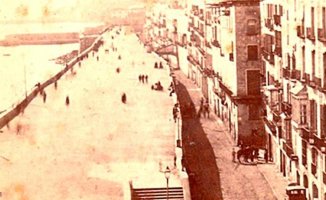He was born in 1746, like Goya, and was appointed Academician of Fine Arts the same year as him. They even shared a patron, the infante don Luis, for whom he would end up exiled to Puerto Rico, accused of covering up his affair. However, and despite his quality, ingenuity and inexhaustible detail that characterize his painting, the name of Luis Paret, who has been called the Spanish Watteau, the greatest representative of Rococo in Spain, is today almost unknown, overshadowed by the genius of the majas and the whims.
Perhaps that is why the director of the Prado Museum, Miguel Falomir, is forceful in presenting the exhibition dedicated to him until August 21: "It is not about who is better, but for a good and adequate understanding of the Spain of the XVIII Paret is as important or even more so than Goya. The Spain that he shows is different, more committed to science, to the ideas of the Enlightenment, to the societies of friends of the country, to the cabinets of natural sciences. He was much more educated than Goya and has connections with the European world, there are those scenes of the bourgeoisie, of theaters, of street life... it is not only the world of the high nobility and chulapos and majas that appears in the painting that Goya made at that very moment”.
Falomir highlights the extraordinary quality of Paret – who died early at the age of 53, just when Goya was presenting his Caprichos –, his value as a chronicler of the Spain of the second half of the 18th century – in which he portrays, whether in the lower or upper classes, the subordinate role suffered by women– and allows, he says, a profound reflection on how the history of Spanish art and painting is constructed.
“Emphasis has been placed on some typical elements, their adherence to realism, naturalism, a certain tremendousism. And Paret fits very badly within that narrative. When looking at his works it is as if an alien saucer had landed on the planet of Spanish painting. When I see it, concepts that are rarely associated with Spanish painting come to mind. Sophistication, culture, elegance, cosmopolitan humor. In your palette, where are the earthy browns, those black tones that are predominant in Spanish painting? It is totally different, it appears as a separate island”, he points out. And he concludes by wondering if the Spain that Paret shows "was the one that could have had the greatest future, that most cosmopolitan, most European Spain."













